Are you considering a loft conversion but wondering if you can add a kitchen to the space?
In this comprehensive article, we will explore the types of loft conversions, the benefits of adding a kitchen, considerations for doing so, and alternative options.
From planning and designing to obtaining the necessary permits and finishing touches, we will take you through the steps of transforming your loft into a functional and stylish living space.
Whether you’re looking to increase property value or create extra living space, adding a kitchen to your loft conversion can be a game-changer.
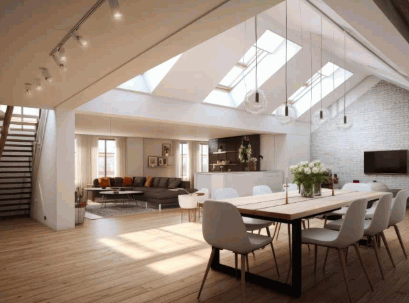
What Is A Loft Conversion?
A loft conversion involves transforming an empty attic room into a functional living space, such as a bedroom, bathroom, or even an open-plan kitchen, thereby increasing the usable area within a house.
Homeowners often opt for loft conversions to utilize unused space effectively and enhance the property’s value. This renovation project is particularly popular among individuals seeking to expand their living area without the need for a costly extension or moving to a new house.
- By converting a loft, homeowners can create versatile rooms like a cozy guest bedroom, a stylish home office, a playroom for children, or a tranquil reading nook, tailored to their specific needs.
- Not only does a well-executed loft conversion provide additional functional space, but it also adds a unique charm and character to a home, often becoming a standout feature for potential buyers.
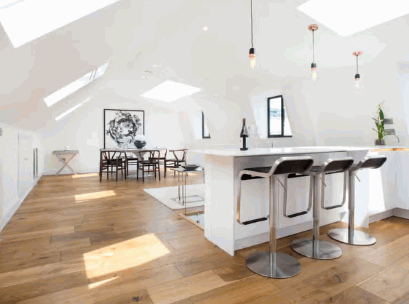
What Are The Types Of Loft Conversions?
There are multiple types of loft conversions, each offering unique design possibilities and building requirements, from dormer loft conversions to mansard loft conversions, each tailored to maximize the loft space and enhance the home’s overall functionality.
Uncover more: How Much Does It Cost For A Loft Conversion
Dormer Loft Conversion
A dormer loft conversion involves extending the roof to create additional headroom and floor space through the installation of dormer windows.
One of the key structural modifications required for a dormer loft conversion is the creation of vertical walls that come up from the roof’s slope, allowing for more space and headroom inside. This design not only enhances the aesthetic appeal of the property but also increases the functionality of the space.
By adding dormer windows, natural light can flood into the loft, creating a brighter and more welcoming atmosphere. This additional space can be utilized in various ways, such as creating a cozy loft bedroom, a small loft lounge, or even a home office.
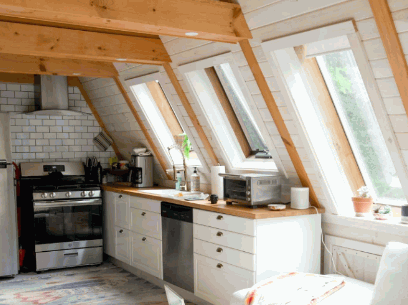
Mansard Loft Conversion
Mansard loft conversions alter the structure of the roof, creating a flat roof with steeply sloping sides, suitable for maximizing loft space and providing versatile design options.
These architectural changes offer homeowners the opportunity to transform their attics into stylish and functional living spaces. With the steep angles of the roof, the upper floor of the house can be expanded to accommodate spacious loft bedrooms or cozy home offices.
Due to the increased headspace gained from mansard loft conversion, adding an additional bathroom or storage area becomes a viable option. The possibilities are endless, allowing for customization that suits individual needs and preferences.
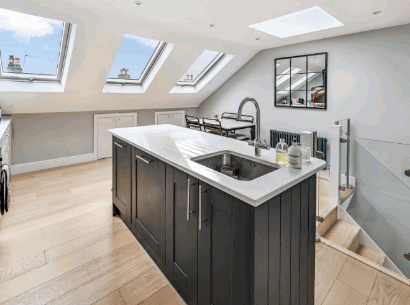
Hip-To-Gable Loft Conversion
A hip-to-gable loft conversion extends the hip of the roof to a vertical gable end, thereby increasing the usable loft space significantly.
During the building process of a hip-to-gable loft conversion, the existing sloping roof is modified to enlarge the available headroom and floor space. This type of conversion is particularly favorable in situations where the existing roof shape limits the usable space in the loft. By altering the roof structure to have a vertical gable end, homeowners can transform previously cramped areas into larger, more functional rooms.
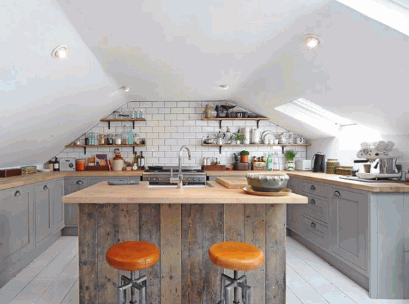
Roof Light Loft Conversion
Roof light loft conversions, often using VELUX windows, involve the least structural alteration, making them a cost-effective way to add natural light and ventilation to the loft space.
These types of conversions are especially beneficial for homeowners looking to create a bright and airy space without breaking the bank. By maximizing the use of natural light, they can transform a dark and unused loft into a cozy retreat, a small loft study, or a charming guest bedroom.
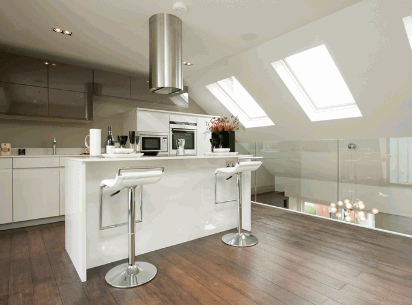
What Are The Benefits Of A Loft Conversion?
Loft conversions offer numerous benefits, including increasing property value, providing extra living space, and being a cost-effective way to enhance your home without the need for significant land space expansion.
Increases Property Value
A well-executed loft conversion can significantly increase property value, often yielding a return on investment that surpasses the initial loft conversion costs.
According to recent studies, properties with loft conversions have shown an average increase in value ranging from 15% to 20%. This uptick in value is not only immediate but also offers long-term financial benefits to homeowners. One key advantage is the enhanced living space that adds functionality and appeal to the property, making it more attractive to potential buyers.
Provides Extra Living Space
One of the primary benefits of a loft conversion is the additional living space it creates, offering homeowners flexibility in terms of room usage and design possibilities.
Having extra space opens up a world of possibilities for homeowners. This newfound area can be transformed into a cozy guest bedroom, providing a welcoming accommodation for visiting friends and family.
Alternatively, it can be set up as a functional home office, creating a peaceful and productive work environment away from the hustle and bustle of the main living areas.
For families with children, the extra space could be perfect for a playroom, ensuring that toys and games have a designated area, and keeping the rest of the house clutter-free.
Cost-effective
Compared to building an extension, a loft conversion is a more cost-effective way to increase living space without the need for additional land or major structural changes to the property footprint.
One of the key economic advantages of opting for a loft conversion is the lower construction costs involved. Since the basic structure of the property remains intact, the expenses related to foundations and external walls are significantly reduced.
The quicker completion times associated with loft conversions can lead to savings in terms of labor and overall project duration. This swift turnaround not only minimizes disruption to your daily life but also allows you to start using the new space sooner, adding value to your home.
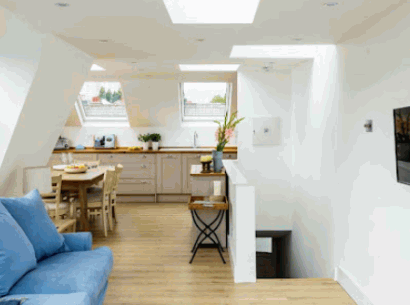
Can You Put A Kitchen In A Loft Conversion?
Yes, you can put a kitchen in a loft conversion, creating a versatile and functional living space that includes modern loft kitchen designs and appliances.
Loft kitchens have been gaining popularity in recent years due to their unique blend of industrial charm and contemporary style. The trend towards open-concept living spaces has made loft kitchens a sought-after feature, offering a seamless flow between cooking and entertaining areas. Industrial-inspired elements such as exposed brick walls, metal piping, and high ceilings add character and flair to these kitchens, making them stand out from traditional layouts.
In terms of practicality, loft kitchens are often compact yet efficient, utilizing every inch of space to maximize functionality. With clever storage solutions, built-in appliances, and integrated dining areas, loft kitchens make the most of limited square footage without compromising on design or convenience.
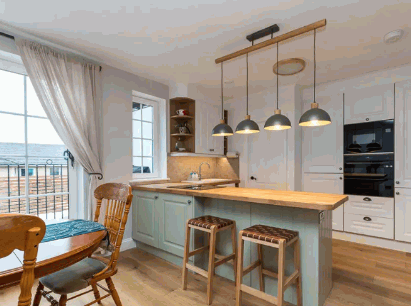
What Are The Considerations For Adding A Kitchen In A Loft Conversion?
When adding a kitchen in a loft conversion, considerations include proper loft lighting, kitchen design, and the integration of essential kitchen appliances to ensure a functional and aesthetically pleasing space.
Regarding loft lighting, natural light is a coveted feature that can enhance the overall ambiance of the kitchen. Skylights or strategically placed windows can brighten up the space and create a welcoming atmosphere. In terms of kitchen design, utilizing space efficiently is crucial in a loft setting; custom cabinetry and versatile storage solutions can maximize every inch.
Structural considerations such as ventilation and plumbing also play a significant role in the layout. Integration of essential appliances like compact stoves, refrigerators, and built-in microwaves is essential to maintain functionality while saving space.
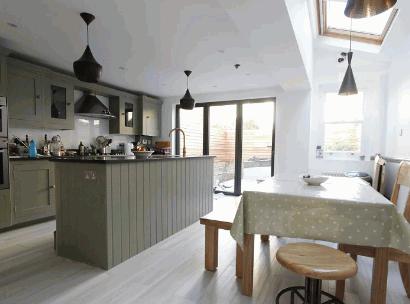
What Are The Building Regulations For Adding A Kitchen In A Loft Conversion?
Building regulations for adding a kitchen in a loft conversion include ensuring the safe installation of loft conversion stairs, proper ventilation, and adherence to electrical and plumbing standards.
Regarding ensuring safety and functionality, building regulations play a crucial role in setting the standards for construction projects. Some key regulations that need to be followed include fire safety measures to prevent potential hazards, structural stability requirements for the addition of new spaces, and insulation standards to ensure energy efficiency.
Compliance with building regulations ensures that the newly converted loft space meets the legal requirements, providing a secure environment for occupants. For instance, maintaining adequate headroom on the stairs, installing fire doors where necessary, and incorporating suitable escape routes are essential components of compliance.
Along with safety aspects, building regulations also focus on the functionality of the space. For a kitchen in a loft conversion, factors like adequate natural light, proper waste disposal systems, and accessibility for individuals with disabilities are taken into consideration.
What Are The Alternatives To Adding A Kitchen In A Loft Conversion?
If adding a full kitchen in a loft conversion is not feasible, there are several alternatives to consider, such as installing a kitchenette, utilizing a shared kitchen in the house, or creating a kitchen space in another room.
Installing A Kitchenette
Installing a kitchenette in the loft space is a compact and efficient alternative, allowing you to enjoy basic cooking amenities without the need for a full-scale loft conversion kitchen.
A typical kitchenette often includes essentials such as a small refrigerator, a microwave or toaster oven, a sink, countertop space for food preparation, a few cabinets or shelves for storage, and possibly a small stovetop or hot plate for light cooking needs. The compact nature of a kitchenette makes it perfect for smaller living spaces like lofts or studio apartments where a full kitchen may not be practical or feasible.
The advantages of having a kitchenette in a loft conversion are numerous – it saves space, reduces costs compared to a full kitchen installation, provides convenience for basic meal preparation, and adds value to the property by increasing functionality. Kitchenettes are also easier to maintain and clean due to their smaller size, making them ideal for busy urban dwellers or those looking for a simpler lifestyle.
When considering loft conversion scenarios suitable for installing a kitchenette, areas with existing water and plumbing connections or easy access to them are ideal. Lofts that are primarily used as guest rooms, home offices, or rental spaces can greatly benefit from the addition of a kitchenette, enhancing their functionality and desirability. Loft conversions that aim to create a cozy living space or a self-contained unit can be transformed into a practical and versatile area with the inclusion of a well-designed kitchenette.
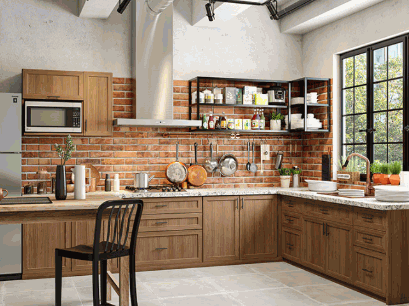
Utilizing A Shared Kitchen In The House
Another alternative is utilizing the existing shared kitchen in the house, which can be practical if the loft conversion is intended for use as a bedroom or study.
By repurposing the shared kitchen, individuals can save a significant amount of money that would have been spent on constructing a new kitchenette within the converted loft. This cost-effective solution not only reduces expenses but also streamlines the overall renovation process, making it more efficient and straightforward. It’s essential to consider potential drawbacks such as limited privacy or noise disruptions that may arise from sharing kitchen facilities with other household members.
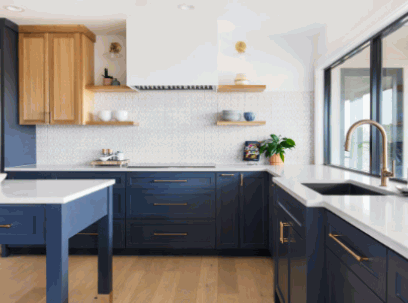
Creating A Kitchen Space In Another Room
Creating a kitchen space in another room of the house, such as converting a guest bedroom or lounge, can be an effective solution if loft space is limited or structurally unsuitable for a kitchen.
This process involves careful planning and consideration of various factors to ensure functionality and aesthetic appeal. When designing a kitchen in an alternative space, it is essential to assess the existing layout and determine the necessary modifications for plumbing, electrical, and ventilation systems.
Space utilization is key, as the new kitchen should offer sufficient storage, counter space, and room for appliances while maintaining a comfortable flow. Incorporating natural light sources and proper lighting fixtures can enhance the ambiance and practicality of the space.
What Are The Steps To Adding A Kitchen In A Loft Conversion?
Adding a kitchen in a loft conversion involves several steps, including careful planning and designing, obtaining necessary permits, building and installation, and applying the finishing touches followed by final inspections.
Planning And Designing
The initial step involves meticulous planning and designing to ensure the loft kitchen design meets both functional needs and aesthetic preferences.
Regarding layout, careful consideration of the available space is crucial. Each corner and surface should be utilized efficiently to maximize storage and workspace. Selecting the right materials is another vital aspect of the planning process. From durable countertops to stylish cabinetry, every choice plays a role in the kitchen’s overall look and feel.
Incorporating design elements such as lighting fixtures, backsplashes, and color schemes can elevate the kitchen’s atmosphere and functionality. Proper lighting placement can enhance both the ambiance and visibility, while a thoughtfully chosen backsplash adds texture and style.
- By paying attention to every detail and aspect of the design process, a well-planned loft kitchen can become the heart of the home, blending practicality with beauty seamlessly.
Obtaining Necessary Permits
Before any construction begins, it is crucial to obtain the necessary permits to ensure compliance with local building regulations and safety standards.
The process of acquiring permits can vary depending on the project’s scale and location. In general, the types of permits required may include building permits, electrical permits, plumbing permits, and environmental permits. Each permit serves a specific purpose in regulating different aspects of the construction process.
Adhering to building regulations is essential not only to avoid legal complications but also to guarantee the structural integrity and safety of the project. Failure to comply with regulations can lead to fines, delays, and even mandatory demolition of the structure.
Building And Installation
The building and installation phase involves constructing the loft kitchen and installing essential appliances, ensuring everything is properly fitted and functional.
Structural modifications are made to accommodate the layout of the kitchen, including supporting beams and flooring adjustments. Once the structural changes are completed, the installation of appliances such as the oven, refrigerator, and sink begins. Each appliance is carefully positioned to maximize space and workflow efficiency within the kitchen. Safety measures are paramount during the installation process to prevent any accidents or mishaps. Proper ventilation systems and electrical wiring are installed to ensure that the kitchen functions smoothly.
Finishing Touches And Final Inspections
The final step includes adding finishing touches to the loft kitchen, such as painting, cabinetry, and final inspections to ensure everything is up to standard.
These finishing touches play a crucial role in enhancing the overall appeal of the kitchen space, giving it a polished and cohesive look that ties all elements together seamlessly. From choosing the right color palette for the paint to selecting the perfect hardware for the cabinetry, each detail contributes to creating a harmonious and inviting atmosphere.
The final inspections are essential to guarantee that all aspects of the kitchen meet safety standards and functionality requirements before it is ready for use. This meticulous review ensures that all installations are secure, appliances are working correctly, and any potential issues are addressed promptly to prevent future complications.

